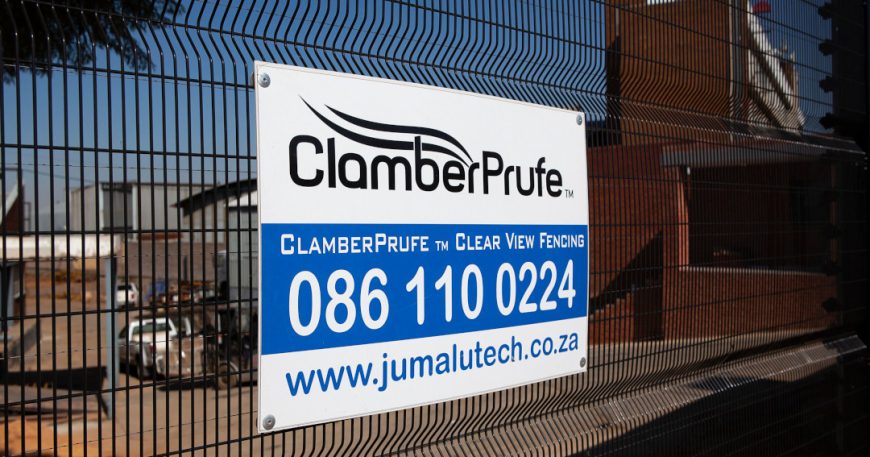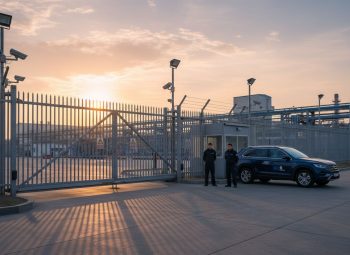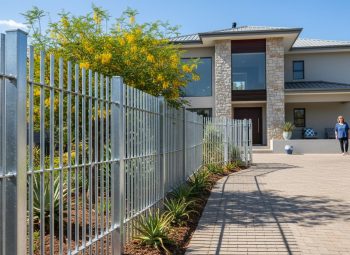Mesh fencing pops up around schools, factories, even farms all over South Africa and looks simple with its open grid of metal wire. Now most think it keeps people out just by being a barrier, tough and see-through. But the smart bit is not in the wire grid or all the fancy coatings. The big deal is its adaptability. Mesh fencing can drop your maintenance costs by up to 30 percent compared to solid barriers. That changes how people think about perimeter protection.
Table of Contents
- What Is Mesh Fencing? A Basic Definition
- Why Mesh Fencing Matters For Property And Security
- How Mesh Fencing Works: Construction And Materials
- Key Concepts In Mesh Fencing: Types And Applications
- Real-World Uses Of Mesh Fencing In Various Sectors
Quick Summary
| Takeaway | Explanation |
| Mesh fencing offers visibility and security | Its transparent design allows for visual monitoring while securing property perimeters against unauthorized access. |
| Adaptable for diverse environments | Mesh fencing can be customized in size and type to suit various applications, from residential to industrial uses. |
| Durable materials ensure longevity | Constructed from galvanized or stainless steel, mesh fencing is resistant to corrosion and weathering, requiring minimal maintenance. |
| Facilitates easy installation and modification | The modular design simplifies installation and allows for future adaptations to evolving security needs. |
| Cost-effective long-term solution | Mesh fencing is an intelligent investment that combines performance with aesthetic appeal, reducing potential security risks effectively. |
What is Mesh Fencing? A Basic Definition
Mesh fencing represents a versatile security solution characterised by its interconnected wire grid design. The South African Bureau of Standards defines this specialized fencing system as a modular barrier constructed from metal wires welded or woven together, creating a robust and transparent perimeter protection method.
Understanding the Structural Composition
At its core, mesh fencing consists of horizontal and vertical metal wire strands precisely interlocked to form a consistent grid pattern. These wires are typically manufactured from galvanized steel or stainless steel, providing exceptional durability and resistance against environmental challenges. The wire thickness and mesh size can vary depending on specific security requirements, allowing customization for different applications.
Key characteristics of mesh fencing include:
- Transparency that enables clear visual monitoring
- High structural integrity and strength
- Resistance to corrosion and weathering
- Adaptability to various terrain and landscape configurations
Functional Applications and Benefits
Mesh fencing serves multiple purposes across residential, commercial, and industrial settings. Security experts recognize its effectiveness in creating secure perimeters while maintaining aesthetic appeal. Unlike solid barriers, mesh fencing offers unobstructed visibility, allowing property owners to monitor surrounding areas without compromising security.
The design enables airflow and reduces wind resistance, making it particularly suitable for locations experiencing strong winds or requiring ventilation. Its modular construction also facilitates relatively straightforward installation and potential future modifications, providing flexibility for evolving security needs.
Why Mesh Fencing Matters for Property and Security
Mesh fencing emerges as a critical security solution that transcends traditional barrier systems by offering comprehensive protection with strategic advantages. Crime prevention experts highlight the importance of perimeter security as a fundamental approach to safeguarding properties against unauthorized access and potential criminal activities.
Strategic Security Enhancement
The significance of mesh fencing extends beyond mere physical obstruction. Its unique design provides multiple layers of security protection that address contemporary property protection challenges. Property owners gain significant advantages through its specialized construction, which creates both a visual and physical deterrent against potential security threats.
Key security benefits include:
- Immediate visual detection of potential intruders
- Unobstructed monitoring of property boundaries
- Minimal concealment opportunities for unauthorized individuals
- Rapid identification of security breaches
Cost-Effective and Long-Term Protection
Mesh fencing represents an intelligent investment in property security. Urban security research demonstrates that well-designed perimeter barriers can significantly reduce potential security risks while maintaining aesthetic appeal. The durability of galvanized steel or stainless steel materials ensures long-term performance with minimal maintenance requirements.
Moreover, mesh fencing provides flexibility for properties ranging from residential compounds to industrial complexes. Its adaptable design allows for seamless integration with additional security installations, such as surveillance systems and access control mechanisms, creating a comprehensive security ecosystem that protects valuable assets effectively.
How Mesh Fencing Works: Construction and Materials
The South African Bureau of Standards defines mesh fencing as a sophisticated security infrastructure with precise manufacturing specifications that ensure optimal performance across various environmental conditions. The construction process involves intricate engineering principles designed to maximize structural integrity and security effectiveness.
Wire Manufacturing and Material Selection
Mesh fencing begins with meticulous material selection, typically involving high-tensile galvanized or stainless steel wires. These materials undergo specialized treatment processes that enhance corrosion resistance and structural durability. The wire selection considers multiple factors, including:
- Thickness requirements for specific security applications
- Environmental exposure conditions
- Required tensile strength
- Potential resistance to cutting and tampering
The manufacturing process involves precise wire welding or weaving techniques that create uniform grid patterns with consistent spacing and structural alignment. Wire diameter and mesh size play crucial roles in determining the overall performance and security capabilities of the fencing system.
Structural Assembly and Design Principles
The assembly of mesh fencing panels requires advanced engineering techniques that transform individual wire components into robust security barriers. Clear View fencing experts emphasize the importance of precision in panel construction, which involves multiple critical steps including:
- Precise wire intersection welding
- Application of protective coatings
- Structural reinforcement at critical connection points
- Integration of support frameworks
Engineering considerations extend beyond material selection, incorporating design elements that enhance overall security performance. The grid-like structure allows for strategic load distribution, wind resistance, and visual transparency while maintaining exceptional strength and durability.
To clarify the different components that make mesh fencing effective, the table below outlines the key characteristics and benefits highlighted in the article.
| Characteristic | Description |
| Transparency | Allows for visual monitoring and unobstructed views |
| Corrosion Resistance | Built from galvanized or stainless steel, suited for harsh South African climates |
| Structural Integrity | Interlocked horizontal and vertical wires add strength |
| Adaptability | Suitable for various terrains and customisable for different security requirements |
| Low Maintenance | Durable materials reduce upkeep costs by up to 30% versus solid barriers |
| Easy Integration | Compatible with access control and surveillance technology |
Key Concepts in Mesh Fencing: Types and Applications
The Human Rights Commission recognizes mesh fencing as a sophisticated security solution with diverse applications across multiple sectors. Understanding the nuanced types and strategic implementations is crucial for selecting appropriate perimeter protection systems tailored to specific environmental and security requirements.
Classification of Mesh Fencing Types
Mesh fencing encompasses several specialized categories designed to address unique security challenges. The primary classifications include:
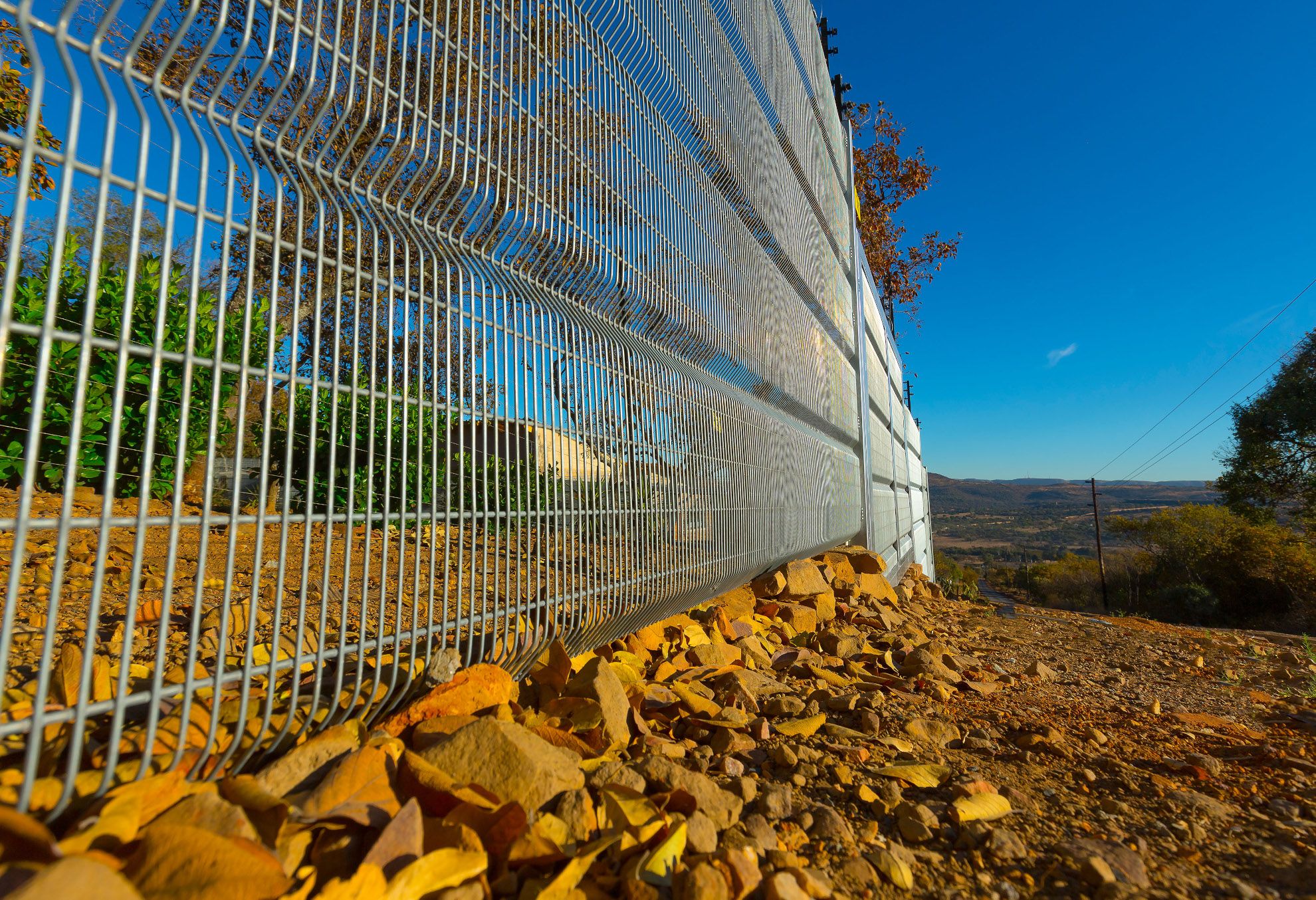
- Welded Mesh Fencing: Characterized by rigid panel construction with intersecting wires welded at precise points
- Chain Link Mesh Fencing: Featuring interlocked wire patterns providing flexible installation options
- ClamberPrufe Clear View Fencing: Ultra-compact mesh configuration with minimal aperture sizes for maximum intrusion prevention
- Roll Top and Bottom Mesh: Incorporating curved top and bottom edges for enhanced aesthetic and safety features
Each mesh fencing type offers distinct advantages based on specific application contexts, with wire diameter, mesh size, and coating treatments determining overall performance characteristics.
Below is a table comparing the main types of mesh fencing mentioned in the article, helping you quickly assess their structure and typical use cases.
| Mesh Fencing Type | Structural Features | Typical Applications |
| Welded Mesh Fencing | Rigid panels, wires welded at intersections | Residential, commercial, schools |
| Chain Link Mesh Fencing | Flexible, interlocked wire pattern | Sports fields, farms, temporary boundaries |
| ClamberPrufe Clear View Fencing | Ultra-compact mesh, minimal apertures | Maximum security, prisons, infrastructure |
| Roll Top and Bottom Mesh | Curved top and bottom edges for safety and aesthetics | Parks, playgrounds, aesthetic boundaries |
Strategic Application Domains
Mesh fencing demonstrates remarkable versatility across multiple infrastructure segments. Enhance security solutions can be implemented in environments ranging from residential complexes to critical national infrastructure.
Key application domains include:
- Residential property boundary demarcation
- Industrial facility perimeter protection
- Educational institution security management
- Agricultural land and farm boundary control
- Transportation infrastructure safeguarding
The selection of appropriate mesh fencing depends on comprehensive assessment of environmental conditions, security requirements, aesthetic considerations, and budgetary constraints. Professional evaluation ensures optimal mesh fencing configuration that balances visibility, durability, and intrusion prevention strategies.
Real-World Uses of Mesh Fencing in Various Sectors
Urban planning research demonstrates that mesh fencing represents a critical infrastructure component across multiple professional and public domains, offering adaptable security solutions tailored to diverse environmental requirements.
Industrial and Commercial Applications
In industrial settings, mesh fencing serves as a robust perimeter protection mechanism that balances visibility with comprehensive security management. Manufacturing facilities, logistics centers, and warehouse complexes utilize mesh fencing to:
- Delineate secure operational boundaries
- Prevent unauthorized personnel access
- Enable continuous visual monitoring of premises
- Facilitate efficient surveillance integration
Commercial environments leverage mesh fencing’s transparency and durability to create professional boundary demarcations that simultaneously communicate security consciousness and aesthetic sophistication.
Public Infrastructure and Critical Zones
Government and municipal infrastructure rely extensively on mesh fencing for strategic security implementations. ClamberPrufe Clear View Fencing proves particularly effective in protecting critical zones such as:
- Transportation hubs and railway networks
- Electrical and utility substations
- Water treatment facilities
- Government administrative complexes
- Educational institution perimeters
The adaptable nature of mesh fencing allows for customized security configurations that address specific institutional risk profiles while maintaining regulatory compliance and operational efficiency. Professional installation ensures comprehensive protection that integrates seamlessly with existing security infrastructure, providing a versatile solution for complex environmental challenges.
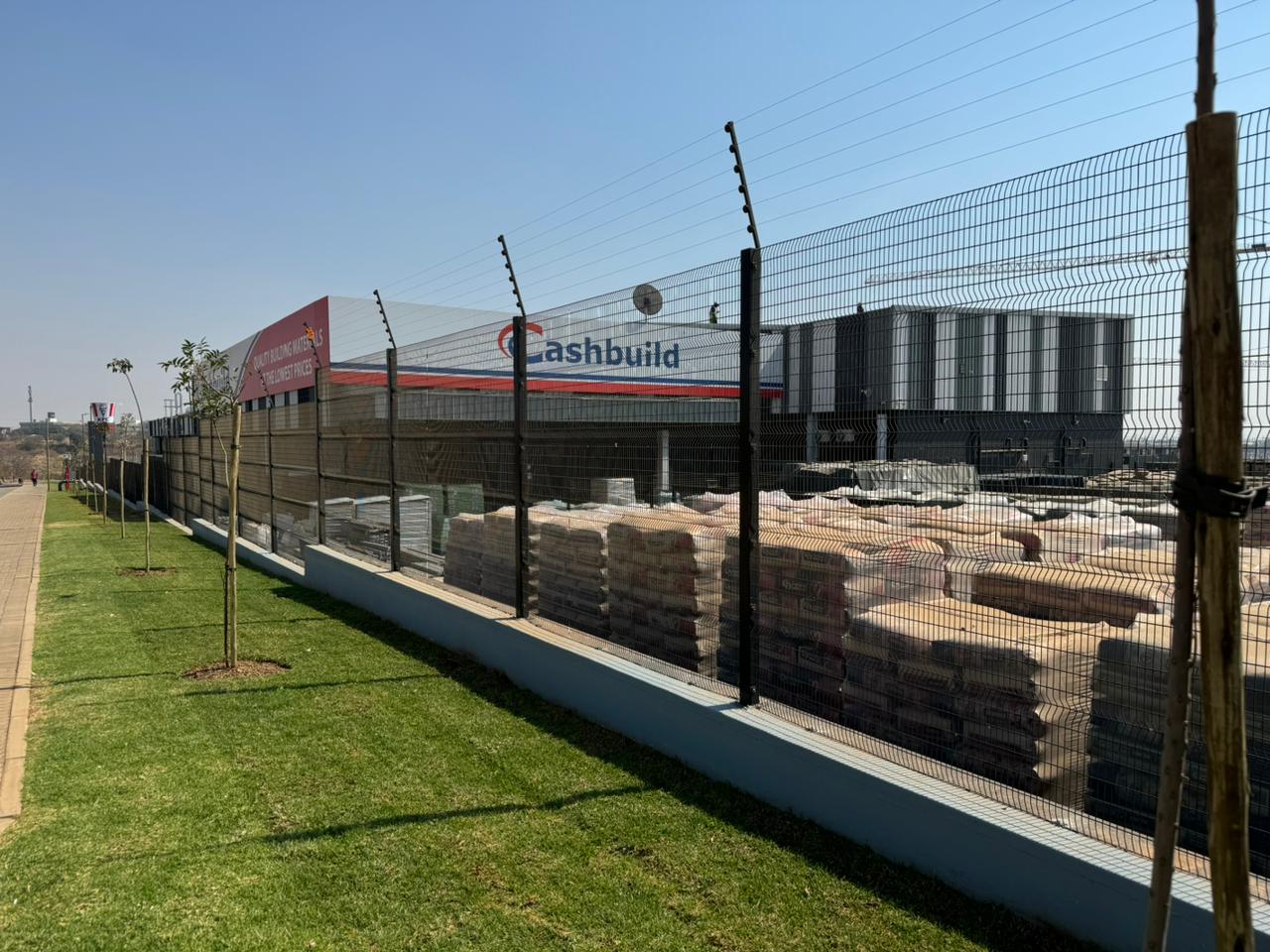
Secure Your Property with Advanced Mesh Fencing Solutions
After exploring the essentials of mesh fencing in the article, you may be asking yourself how to protect your property with a solution that offers transparency, strength, and adaptability. Many property owners struggle with achieving a balance between robust security and clear visibility. Challenges like unauthorized access, harsh weather, and the risk of tampering can leave you feeling vulnerable, especially when traditional barriers fall short. Mesh fencing, especially ClamberPrufe Clear View Fencing, was specifically designed to address these concerns by providing anti-climb and anti-cut protection, unobstructed views, and aesthetic appeal as highlighted in this article.
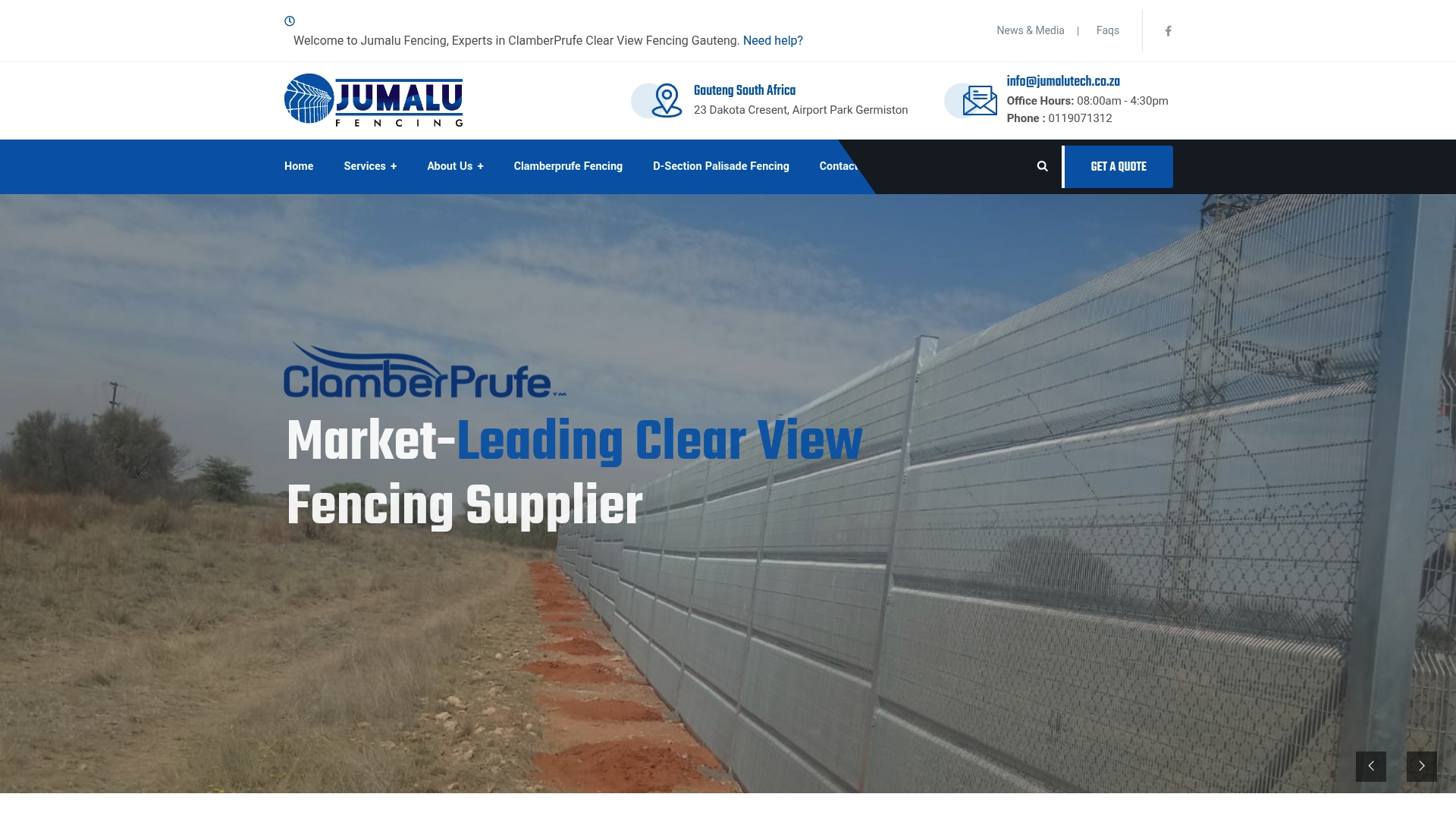
Experience peace of mind and a professional finish by choosing one of the most trusted high-security fencing solutions in South Africa. Trust the experts at Jumalu Tech to guide you through the selection, supply, and installation process. Ready to make your property truly secure? Discover how our mesh fencing and comprehensive gate manufacturing services can protect your assets. Contact us today for a tailored quote and let your perimeter do more.
Frequently Asked Questions
What types of materials are used in mesh fencing?
Mesh fencing is typically constructed from galvanized steel or stainless steel, providing strength and durability. To ensure longevity, select materials that are corrosion-resistant and suited for the environmental conditions of your property.
How can I customize mesh fencing for my security needs?
Mesh fencing can be tailored by adjusting wire thickness and mesh size to meet specific security requirements. Consider factors such as the level of visibility desired and potential intruder prevention capabilities when making adjustments.
Does mesh fencing allow for visibility while providing security?
Yes, mesh fencing features a grid design that maintains transparency, enabling clear visual monitoring of your property while ensuring security. This makes it easier to detect potential threats without sacrificing sightlines.
How does the installation process of mesh fencing work?
The installation of mesh fencing typically involves assembling pre-fabricated panels that are anchored into the ground. You can expect the installation to be relatively straightforward, often completed within a few days, depending on the size of the area to be fenced.
What security benefits does mesh fencing offer?
Mesh fencing provides critical security advantages, including immediate visual detection of intruders and minimal concealment opportunities for unauthorized individuals. These features enable property owners to enhance their overall perimeter security effectively.
Can I integrate additional security features with mesh fencing?
Yes, mesh fencing is adaptable and can be easily integrated with security systems like cameras or access control mechanisms. To enhance overall security effectiveness, consider implementing these technologies alongside your mesh fencing setup.



